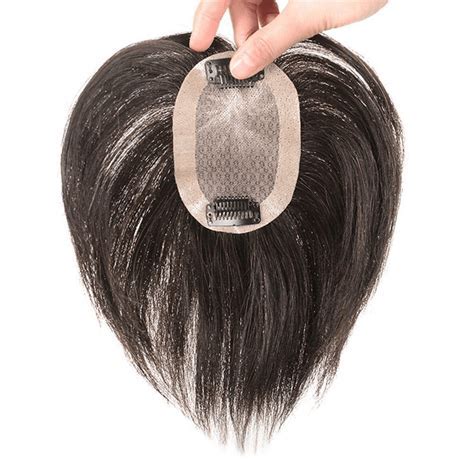Introduction
Thinning hair is a common concern affecting millions worldwide. If you’re seeking a solution to enhance hair volume and thickness, hair extensions offer an effective remedy. This comprehensive guide explores the diverse types of hair extensions for thin hair, their benefits, and the factors to consider before making a decision.

Types of Hair Extensions for Thin Hair
- Clip-In Extensions: Easily add length and volume with clip-in extensions. Available in a wide range of colors and textures to match your natural hair.
- Tape-In Extensions: Tape-in extensions provide a more permanent solution than clip-ins. Adhesive tapes secure the extensions to your hair, creating a seamless blend.
- Fusion Extensions: Fusion extensions involve attaching extensions to your hair using heat or glue. They offer a long-lasting option with invisible bonds.
- Weave Extensions: Weave extensions create a dense, full appearance by interweaving extensions with your natural hair. They provide excellent versatility and protection for fragile hair.
Benefits of Hair Extensions for Thin Hair
- Increased Volume and Thickness: Extensions instantly add volume and thickness to thin hair, giving you a fuller, more lustrous look.
- Enhanced Length: If you desire longer hair, extensions can seamlessly extend the length of your natural hair, providing you with the desired style.
- Color and Highlight Options: Hair extensions offer a wide array of color and highlight options, allowing you to experiment with different shades and create a customized look.
- Protective Styling: Extensions can act as a protective layer for thinning hair, shielding it from damage caused by styling tools and environmental factors.
Factors to Consider Before Getting Hair Extensions
- Hair Type and Condition: Extensions should complement your natural hair type and texture to ensure a natural appearance. Fragile or damaged hair may not be suitable for certain types of extensions.
- Cost and Maintenance: Hair extensions can range in price and require regular maintenance. Consider your budget and time commitment before making a decision.
- Lifestyle and Activity Level: Your lifestyle and activity level should be taken into account when choosing extensions. Certain types may not be suitable for active individuals or those with demanding schedules.
- Consultation with a Professional: Consult with a qualified hair stylist to determine the best type of extensions for your needs and receive expert guidance on care and maintenance.
Pain Points and Motivations for Thin Hair Extensions
Pain Points:
- Frustration with thin, limp hair that lacks volume and thickness
- Difficulty achieving desired hairstyles due to lack of fullness
- Social insecurity or embarrassment about hair loss
- Damage to hair resulting from over-styling or environmental factors
Motivations:
- Desire for a fuller, thicker appearance
- Enhanced length and versatility in styling options
- Increased confidence and self-esteem
- Protection of fragile hair from further damage
Pros and Cons of Hair Extensions
Pros:
- Instant volume and thickness
- Customizable styling options
- Protective layer for natural hair
- Can enhance confidence and self-esteem
Cons:
- Can be expensive and require regular maintenance
- Potential for damage to natural hair if not applied correctly
- May not be suitable for all hair types and lifestyles
Table 1: Comparative Overview of Hair Extension Types
| Type | Attachment Method | Durability | Maintenance |
|---|---|---|---|
| Clip-In | Clips | Low | Easy |
| Tape-In | Adhesive Tapes | Medium | Moderate |
| Fusion | Heat or Glue | High | Complex |
| Weave | Interweaving | Medium | Moderate |
Table 2: Cost Comparison of Hair Extension Types
| Type | Average Cost |
|---|---|
| Clip-In | $100-$300 |
| Tape-In | $200-$500 |
| Fusion | $300-$800 |
| Weave | $200-$600 |
Table 3: Maintenance Requirements for Hair Extension Types
| Type | Maintenance Frequency | Professional Care |
|---|---|---|
| Clip-In | As needed | Not required |
| Tape-In | Every 4-6 weeks | Recommended |
| Fusion | Every 2-3 months | Required |
| Weave | Every 6-8 weeks | Recommended |
Table 4: Suitability of Hair Extension Types for Different Hair Conditions
| Hair Condition | Suitable Extension Types |
|---|---|
| Fine and Thin | Clip-In, Tape-In, Weave |
| Coarse and Thick | Fusion, Weave |
| Damaged or Fragile | Clip-In, Weave (with caution) |
Conclusion
Hair extensions for thin hair offer a transformative solution for those seeking to enhance volume, thickness, and overall hair appearance. By understanding the different types, benefits, and considerations involved, you can make an informed decision that aligns with your hair goals and lifestyle. With proper care and maintenance, hair extensions can empower you with fuller, more lustrous locks, boosting your confidence and allowing you to embrace a more voluminous and vibrant hairstyle.
